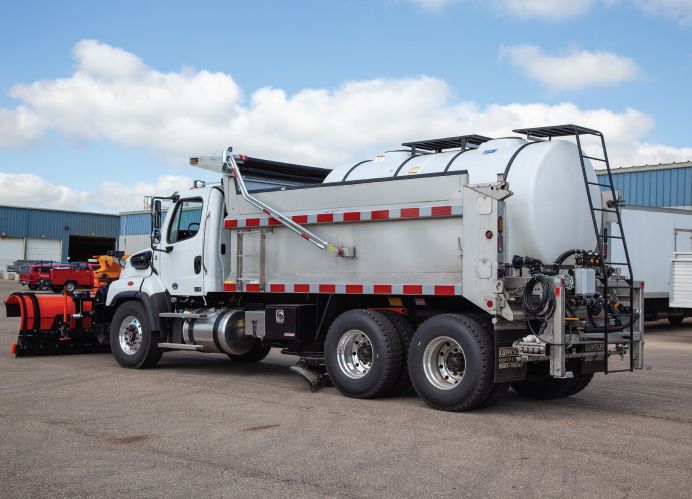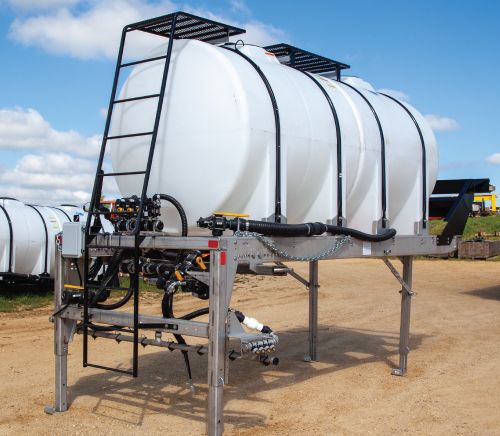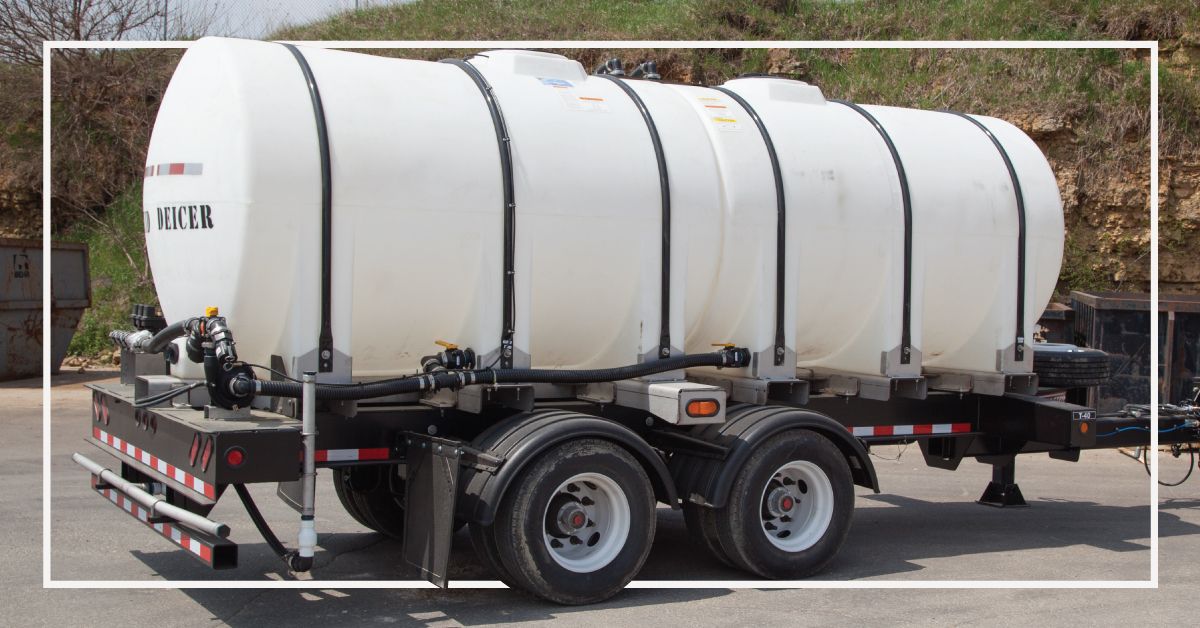Every winter, municipalities across the country are faced with securing the equipment and materials needed to clear snow, de-ice and keep their residents and communities safe from the hazards of unsafe roadways.
As regional needs and trends change over the years, new products are created to meet demand. Liquid anti-icers (applied before a snow storm) are becoming increasingly popular as a choice across the country because they can reduce labor time, offer a more environmentally friendly option and create safer and more manageable driving conditions.
The Snow & Ice Management experts at Monroe Truck Equipment put together this overview of liquid anti-icers to help keep municipalities across the country safe through inclement weather and tough road conditions.
What is a Liquid Anti-Icer?

Liquid agents are called anti-icers instead of de-icers when the material is applied before the snow event.
The liquid then reduces snow and ice build up on the surface where it was sprayed.
Liquid systems are a great choice for municipalities because it can greatly reduce the amount of labor and materials needed to maintain road safety during or after a storm event. It also reduces black ice, and sometimes even eliminates the need to send crews during or after a snow event, depending on the severity of the storm.
Pre-treatment, the process of applying liquid anti-icers can be done before the snow storm by either several hours and even days, depending on conditions. Anti-icing liquid can be made of several different materials.
There are communities across North America experimenting with different types of anti-icers including beetroot, corn and the Wisconsin specialty: cheese brine. Most commonly used however, is a salt brine — liquid sodium chloride (NaCl).
Different liquid combinations (used with a variety of chloride based salts) can be used in temperatures ranging from -20 degrees Fahrenheit and higher.
Regional conditions, existing equipment and preferences will help determine what solution is right for your community.
Advantages of Liquid Anti-Icers
Precise Application
Liquid sprayer systems can be calibrated to fit the exact needs of your community, reducing the risk of over and under application of product.
Less Material Usage
Because the anti-icing agent is in a liquid solution, it requires less material to be effective over longer lengths of road– saving long term material costs.
Save Labor Costs
Liquid anti-icing is one of the most effective ways to reduce labor (and therefore reduce complications) of snow and ice removal during a storm by preventing bonds from forming before the storm.
Reduce Scatter
Rock salt can quickly bounce and scatter across the road, reducing efficiency. Liquid solutions are sprayed and stay in place.
Not Displaced By Traffic
Liquid anti-icers aren’t displaced by high traffic or slopes of the roadway.
Highly Effective
Liquid solutions can remain effective for hours/days depending on weather conditions.
Environmentally Conscious
The reduction of granular material is friendlier to the environment.
Disadvantages of Liquid Anti-Icers
Learning Curve
There are logistical hurdles to really mastering the art of liquid anti-icers. There is a dynamic between temperature, timing and the solution created. While liquid options are growing in popularity, and solutions are becoming easier to manage, there will still be time and understanding needed to effectively anti-ice with liquids.
Cannot Be Used In Isolation
While there are many great advantages to using liquid anti-icers, they cannot replace plowing and even de-icing after the fact.
Must Be Completed In Appropriate Weather
Anti-icing is the first in a series of actions to take when tackling a winter storm. Depending on the liquid solution you choose, you may have to pay attention to the temperature of the pavement when you’re anti-icing. Certain liquids have more strict requirements than others.
The Right Equipment For The Job 
Liquid anti-icers are applied using sprayers that come out of a tank that holds the solutions. There are a variety of different options of sprayers that can be used across several lanes. Different solutions will spray at different rates, so it is incredibly important to have your system calibrated correctly so you can protect your roads, and achieve effective ice melting. Learn more from the Wisconsin Transportation Information Center for municipalities and local governments.
Monroe Truck Equipment Anti-Icing Trailer & Truck Equipment
For a more proactive approach to road safety, the Monroe Truck Equipment Anti-Icing Trailer is a valuable solution. This liquid application system is ideal for treating pre-storm events because it prevents the bond of ice to the road, and provides a more cost-effective and environmental alternative than granular material. The capacity of this trailer increases route payload, reduces the need to re-apply, and allows you to keep your community safe with fewer drivers.
The Monroe Anti-Ice Trailer is an ideal solution for Pre-Storm Events, Pre-Frost Treatment, Black Ice Treatment on and under bridges and overpasses.
Features:
- 500-6,500 Gallon Baffled Tanks
- 20-60 Gallon per Lane Mile; 1-3 Lanes
- Right Hand, Left Hand and/or Center Lane Applicators
- Directable Side Nozzles
- Application Rates up to 55 MPH
- Reduce Overall Winter Operation Costs
- Use Less Rock Salt
- Get the Pre-Treating Advantage on Fighting a Storm
- Environmentally Friendly
- SHRP (Strategic Highway Research Program) Tested Technology
Backed By True Partnership
Monroe Truck Equipment’s team of municipal experts work with community leaders across the country to invest in the trucks and equipment that will meet their budget, schedule and ultimately keep their roads and communities safe. For more detailed information about this anti-ice trailer, download our anti-ice trailer literature and get a free consultation from a snow and ice expert about your specific community’s anti-icing needs.
